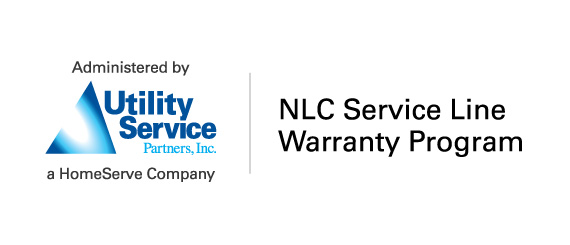
A Three-Pronged Approach to Water Conservation in Drought - from NLC Service Line Warranty
By Bill Eller
What Can Residents Do?
Here are a few tips to help residents conserve water during a drought.
- Use washing machines and dishwashers for full loads only.
- When washing dishes or hands, brushing teeth or shaving, don’t let the water run.
- Take shorter showers and install low-flow shower heads.
- Mulch plants and trees, while watering either early in the morning or late in the evening to reduce evaporation.
- Put the hose away. Use a broom to clean sidewalks, patios and driveways and a bucket and sponge to wash cars.
Aging infrastructure can be costly – and even more so during a drought, as thousands of gallons of potable water spill from leaking pipes when municipalities can least afford the loss. More than 2.1 trillion gallons are lost across the country each year. That hurts a municipality’s bottom line, but especially so during a drought, when every drop is precious.
Drought doesn’t only impact homeowners – businesses, especially restaurants, hospitals and farms, need a steady water supply. In 2012, two-thirds of the country suffered a chronic drought and, over a twenty-year period from 1980 to 2000, droughts cost U.S. communities and businesses more than $100 billion. In addition, cities are seeing historic growth – and historic pressure on resources such as water.
The most successful approaches to water conservation during a drought mitigate the impact on the system, residents and businesses. While you can’t always predict a drought, you can prepare for one by being proactive, flexible and communicating with your customers.
Be Proactive
Planning for a drought may seem overwhelming, but many best practices double as drought preparation. Integrating water, storm and wastewater and sanitation management with planning and economic development not only will improve water resilience, but also help address environmental and economic issues in your community. A holistic approach can combine planning with water management to encourage green spaces and ground cover, which not only improves water availability, but also decreases vandalism and stress, with studies showing green space can be mentally restorative and invoke community pride.
Pairing up economic development and water management also can pay dividends: The Alliance for Water Efficiency estimates that a $10 billion investment in water efficiency across the country could increase the GDP by $13 to $15 billion and create 120,000 to 260,000 jobs. Combining a cross-department approach with analytics – such as the analytics being used to produce real time data by the Sacramento Area Sewer District to prevent spills – will allow you to make improvements with an eye toward multiple benefits. Investments in resilient infrastructure also can save thousands of dollars in potable water by reducing water loss while improving performance and supply capacity and reducing operating costs.
Be Flexible
Every community has finite water resources – being flexible in their management is key to ensuring a steady supply through a drought.
There are several ways to diversify water supply, including increasing storage capacity, working cooperatively with other water utilities to share resources and using innovative technology, such as desalination systems and recycling grey water.
Although desalination has been expensive in the past, it is rapidly becoming more affordable, leading to Tampa Bay Water opening one of the largest desalination plants – alongside a 15 billion gallon reservoir. Even if you have your own supply of water, having a purchase agreement and connection in place with another municipality may provide the flexibility needed to survive an extreme weather event.
Reusing water that has been used in sinks, showers and washers for flushing toilets and doing laundry can reduce a household’s water usage by a third, and homeowners are beginning to take note, either retrofitting their plumbing or having homes built with systems to treat and store grey water for reuse. Some utilities, such as the Orange County Water District, have replicated grey water recycling across an entire water system.
There are several ways to store water, from more traditional water towers and reservoirs to less conventional practices, such as recharging groundwater in times of excess water and irrigation canals. With global declines in water storage, increasing storage capacity is more important than ever.
Communicate
Another way to increase your water supply is to communicate with your customers – a water conservation education program can free up supply by reducing use.
It is crucial to educate residents about simple practices to reduce their water use, as well as more elaborate conservation measures, such as installing cisterns or rain barrels to collect rain water and landscaping with native, drought-resistant plants.
Encouraging water-use efficiency across residential, agricultural and commercial sectors, in conjunction with infrastructure efficiencies, such as leak detection and energy audits, can be scaled to the size of the system and have both long-term and short-term benefits. The Environmental Protection Agency’s WaterSense program helps identify plumbing products, such as low-flow fixtures, meant to conserve water and energy. Low-flow fixtures can save thousands of gallons of water over their lifetime.
Communicating regularly with your customers about water conservation keeps it top of mind, but it also keeps open a line of communication if you need to inform them about voluntary or mandatory restrictions on water usage.
Private side water and sewer lines can also be a cause of potable water loss, and many homeowners are unaware of their responsibility for these lines. Consider educating them through a partnership with the NLC Service Line Warranty Program.
Contributed by Utility Service Partners, a League Endorsed Partner




